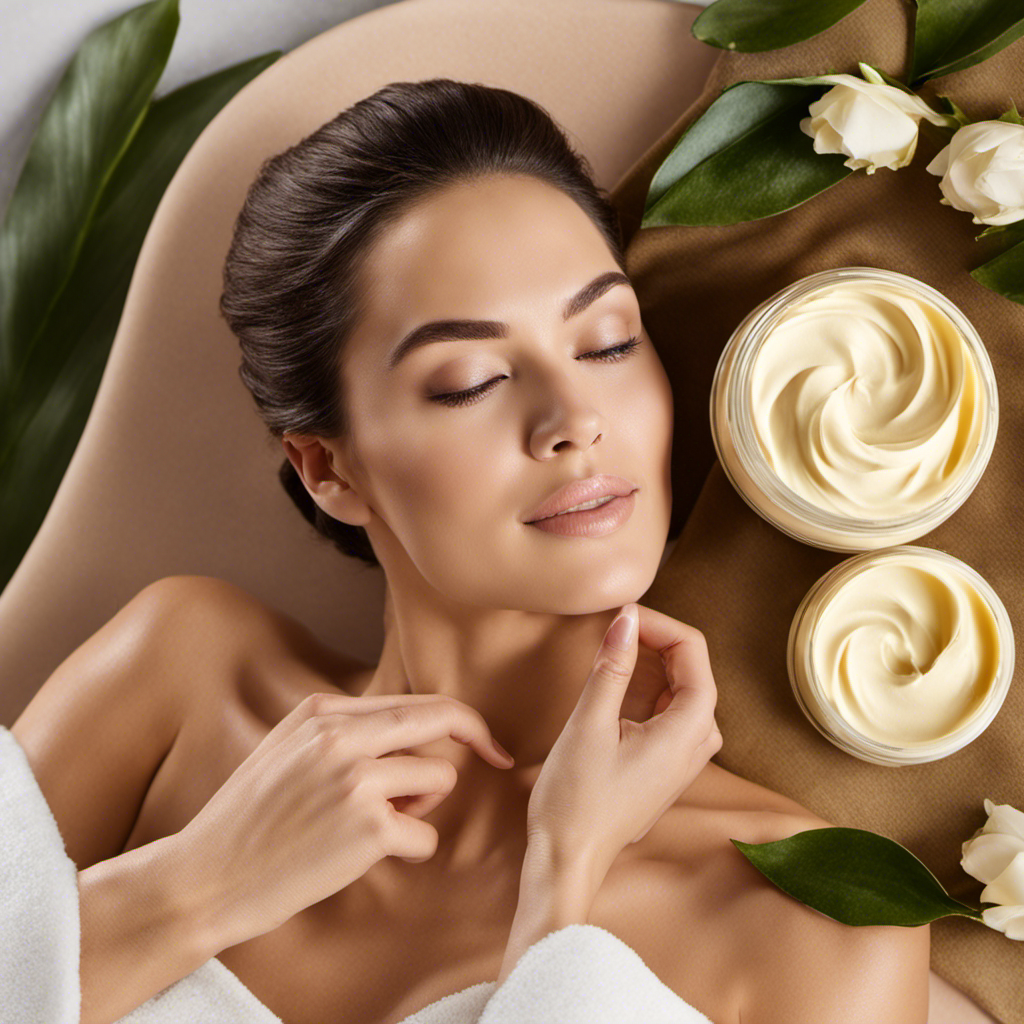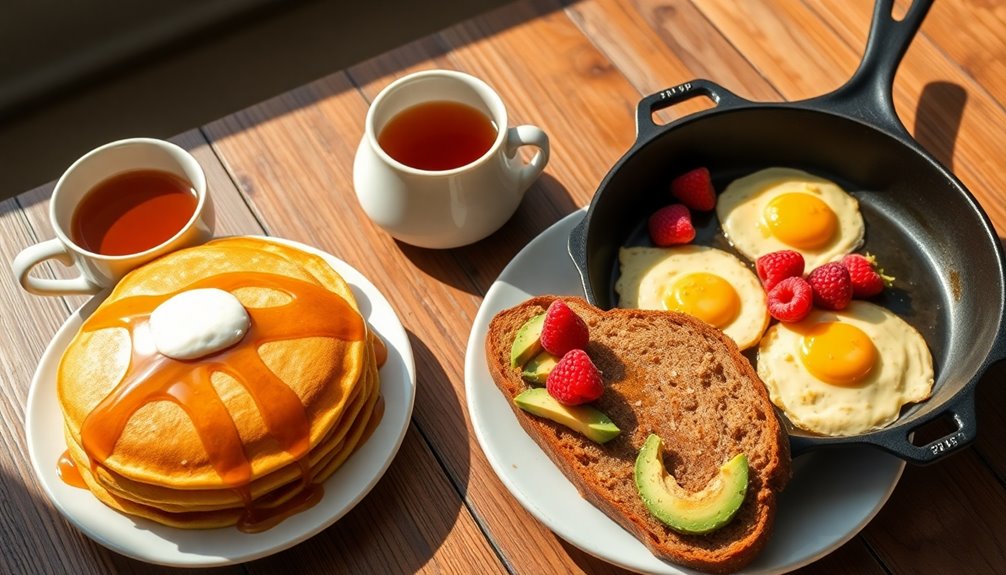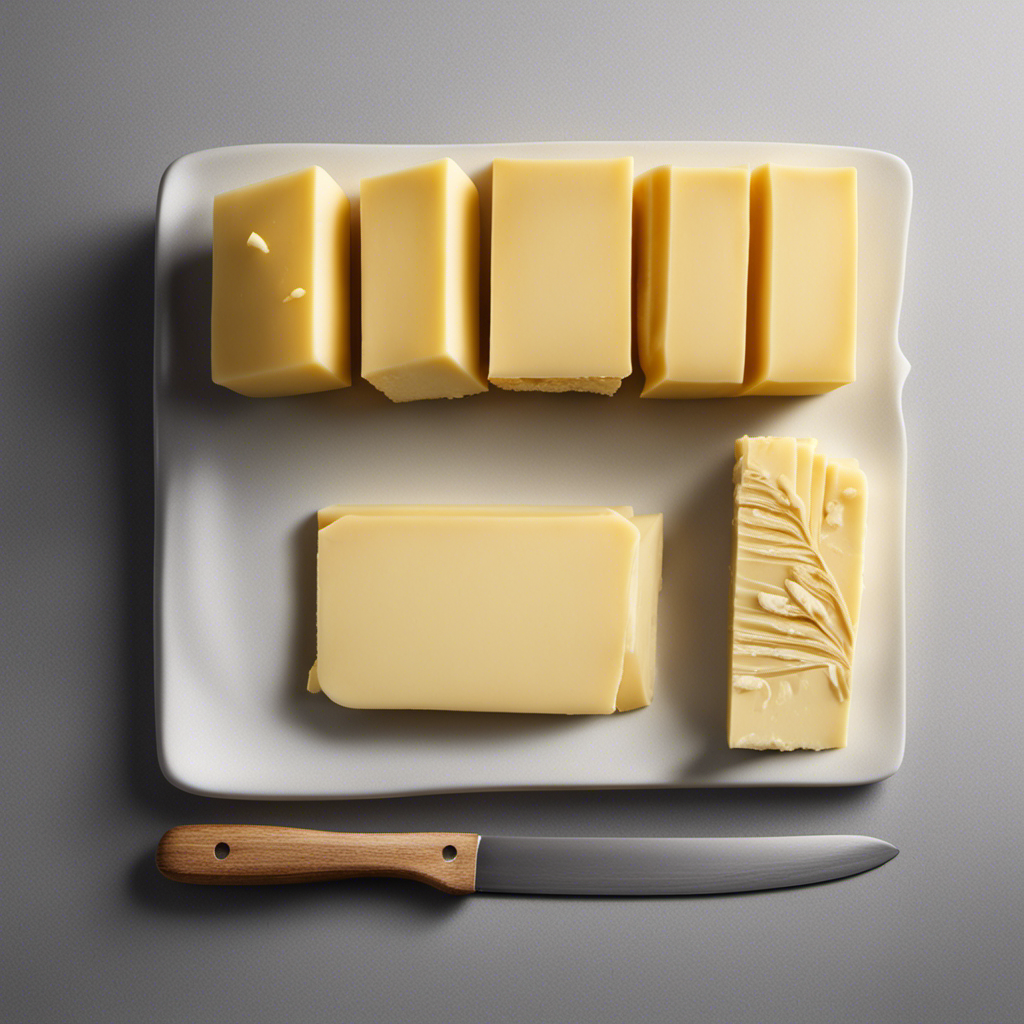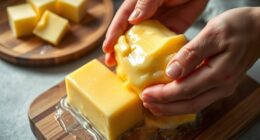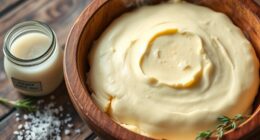Have you ever stopped to think about the divine smell that hits your nose when you encounter cocoa butter? Well, ponder no further! This article delves into the enticing fragrance of cocoa butter.
Get ready to indulge your senses as we explore the key fragrance notes, factors influencing its scent, and even compare it to other ingredients. Whether you’re a cocoa butter connoisseur or simply curious, you’re in for a treat!
So, let’s unravel the mystery and discover what cocoa butter really smells like.
Key Takeaways
- Cocoa butter has a rich, sweet, and unmistakably chocolatey scent.
- The aroma of cocoa butter is creamy and velvety, with a combination of chocolatey, nutty, and earthy notes.
- The scent of cocoa butter can vary based on factors such as ingredient origins, processing, temperature and environment, and interaction with other substances.
- Compared to other ingredients and synthetic fragrances, natural cocoa butter offers a unique and distinct scent associated with warmth and indulgence.
The Aroma of Cocoa Butter
When you smell cocoa butter, it instantly transports you to a warm and indulgent chocolatey paradise. The aroma characteristics of cocoa butter are rich, sweet, and unmistakably chocolatey. It has a creamy and velvety scent that is both comforting and enticing.
The sensory experience of inhaling cocoa butter is like being enveloped in a cloud of pure cocoa goodness. The aroma is incredibly inviting and can evoke memories of cozy hot chocolate on a winter’s day or freshly baked chocolate chip cookies.
It’s no wonder that cocoa butter is often used in beauty products, as its scent alone can create a sense of relaxation and indulgence. So next time you come across cocoa butter, take a moment to inhale its heavenly aroma and let it transport you to a world of chocolate delight.
Key Fragrance Notes in Cocoa Butter
When it comes to the aromatic properties of cocoa, you’ll find a scent profile that is rich, warm, and indulgent. The scent of cocoa is often described as a combination of chocolatey, nutty, and earthy notes.
These fragrant qualities give cocoa its distinctive and enticing aroma, making it a beloved ingredient in a variety of products, from chocolates to perfumes.
Aromatic Properties of Cocoa
Cocoa butter smells like a combination of chocolate and a hint of sweetness. Its aroma intensity can vary depending on factors such as the quality of the cocoa beans and the extraction process.
When cocoa beans are carefully fermented and roasted, the resulting cocoa butter carries a strong and rich chocolate scent. The sweet undertones add depth to the fragrance, making it even more enticing.
As for its aroma longevity, cocoa butter has a moderate staying power. It lingers on the skin for a few hours, gradually fading away. To enhance its longevity, you can apply cocoa butter to well-hydrated skin or layer it with other scented products.
The captivating scent of cocoa butter is a true delight for the senses, evoking warmth and indulgence.
Scent Profile of Cocoa
The scent of cocoa butter is a delightful combination of chocolate and a subtle sweetness. Derived from the ingredient sources of cocoa beans, cocoa butter carries the essence of its origins. It is the fat component of the cocoa bean and is extracted through a process of pressing roasted cocoa beans.
The resulting scent is rich, warm, and comforting, reminiscent of the familiar aroma of chocolate. The perception of this scent can vary from person to person, as scent perception is subjective and influenced by individual preferences and experiences. Factors such as the quality of the cocoa beans, the degree of roasting, and the extraction method can all contribute to the unique scent profile of cocoa butter.
As we explore the factors influencing cocoa butter’s scent, we will gain a deeper understanding of its aromatic properties.
Factors Influencing Cocoa Butter’s Scent
When it comes to understanding the factors that influence the scent of cocoa butter, there are three key points to consider: ingredient origins and processing, temperature and environment, and interaction with other substances.
Firstly, the origins and processing of the cocoa beans play a crucial role in determining the aroma of the resulting cocoa butter. Factors such as the type of cocoa bean, the fermentation process, and the extraction method can all contribute to the final scent.
Secondly, the temperature and environment in which the cocoa butter is stored and used can also impact its fragrance. Temperature variations and exposure to light, air, and moisture can alter the scent over time.
Lastly, the interaction of cocoa butter with other substances, such as essential oils or fragrances, can further influence its aroma.
Ingredient Origins and Processing
Did you know that cocoa butter is extracted from cocoa beans through a process called pressing? This essential ingredient in chocolate making is derived from the seeds of the cocoa tree, which are found inside the large pods that grow on the tree. After the cocoa beans are harvested, they undergo a series of processing techniques to extract the cocoa butter. The beans are first fermented, dried, and then roasted to bring out their rich flavors. Once the beans are roasted, they are crushed to separate the cocoa solids from the cocoa butter. The cocoa butter is then extracted by pressing the remaining cocoa solids, resulting in a smooth and creamy substance with a subtle chocolate aroma.
Here is a table that depicts the journey of cocoa butter from its ingredient origins to the final processing techniques:
| Ingredient Origins | Processing Techniques |
|---|---|
| Cocoa Beans | Fermentation |
| Drying | |
| Roasting | |
| Crushing | |
| Pressing |
The process of extracting cocoa butter is a delicate one, requiring precision and expertise to maintain the quality and aroma of the final product.
Temperature and Environment
Maintaining proper temperature and environmental conditions is crucial during the delicate process of extracting cocoa butter. The temperature effects play a significant role in ensuring the quality and consistency of the final product.
The cocoa beans are carefully roasted at a specific temperature to unlock the flavors and aromas, resulting in the rich and distinct scent of cocoa butter. After roasting, the beans are crushed and pressed, separating the cocoa solids from the cocoa butter.
The storage conditions also play a vital role in preserving the aroma and preventing any degradation. To maintain the quality, cocoa butter should be stored in a cool and dry place, away from direct sunlight and strong odors.
Interaction With Other Substances
Mixing cocoa butter with other substances, such as essential oils or herbs, can create unique and aromatic blends for use in various skincare products. When it comes to cocoa butter compatibility, it is important to consider the scent interactions between different ingredients.
Cocoa butter has a natural, mild chocolate aroma that is both soothing and comforting. When combined with essential oils or herbs, the scent of cocoa butter can be enhanced or altered, depending on the specific ingredient used.
For example, blending cocoa butter with lavender essential oil can create a calming and relaxing aroma, perfect for a nighttime moisturizer. On the other hand, combining cocoa butter with citrus essential oils can add a refreshing and invigorating scent to your skincare products.
Comparing cocoa butter’s smell to other ingredients allows you to create the perfect scent profile for your desired skincare product.
Comparing Cocoa Butter’s Smell to Other Ingredients
Cocoa butter has a distinct, rich, chocolatey aroma that sets it apart from other ingredients. Here’s a comparison to help you understand its unique scent:
-
Cocoa butter vs. Shea butter: While both have a natural, nutty aroma, cocoa butter has a stronger chocolate scent, reminiscent of a freshly baked brownie. Shea butter, on the other hand, has a milder, earthy fragrance.
-
Cocoa butter vs. Coconut oil: Coconut oil has a sweet, tropical scent that brings to mind the beach and summer vibes. In contrast, cocoa butter’s aroma is deeper and more indulgent, evoking the comforting smell of a chocolate dessert.
-
Cocoa butter vs. Almond oil: Almond oil has a subtle, sweet fragrance that is often associated with marzipan. Cocoa butter, however, has a more pronounced chocolate scent that can transport you to a world of decadence and indulgence.
Cocoa Butter Varieties and Their Distinct Scents
When exploring different varieties of cocoa butter, you’ll discover a range of distinct scents that add depth and complexity to your skincare products. The fragrance of cocoa butter can vary depending on the specific ingredient variations used and whether the fragrance is natural or synthetic. Natural cocoa butter has a rich, chocolatey aroma that evokes warmth and indulgence. It has a slightly sweet, nutty scent that is reminiscent of roasted cocoa beans. On the other hand, synthetic fragrances can mimic the scent of cocoa butter but may lack the natural complexity and depth. Here is a table showcasing the different scents of cocoa butter varieties:
| Cocoa Butter Variety | Fragrance |
|---|---|
| Natural Cocoa Butter | Rich, chocolatey, nutty |
| Synthetic Cocoa Butter | Artificial, lacking complexity |
Incorporating different cocoa butter varieties and their distinct scents can elevate the sensory experience of your skincare products.
Enhancing the Scent of Cocoa Butter in Products
To enhance the scent of your cocoa butter products, you can experiment with different essential oils or botanical extracts. Adding these fragrant ingredients can create unique scent variations and elevate the overall fragrance of your cocoa butter products.
Here are three ways to enhance the fragrance of your cocoa butter creations:
-
Essential Oils: Choose from a wide range of essential oils such as lavender, vanilla, or citrus to infuse your cocoa butter products with delightful scents. Each essential oil brings its own distinct aroma and can complement the natural fragrance of cocoa butter.
-
Botanical Extracts: Consider using botanical extracts like chamomile, rose, or jasmine to add a touch of natural floral scent to your cocoa butter products. These extracts can provide a subtle and refreshing fragrance that enhances the overall sensory experience.
-
Blending Techniques: Experiment with different blending techniques to create unique scent combinations. You can mix multiple essential oils or botanical extracts to create your signature fragrance that perfectly complements the rich aroma of cocoa butter.
Conclusion
As you breathe in the intoxicating scent of cocoa butter, you are transported to a world of decadence and indulgence. The warm and comforting aroma envelops your senses, like a gentle embrace from a loved one.
It evokes images of rich, velvety chocolate melting on your tongue, and the smooth, buttery texture of a luxurious dessert. With its distinct fragrance notes and unique variations, cocoa butter is a sensory delight that adds an exquisite touch to any product.
So go ahead, close your eyes and let the enchanting scent of cocoa butter whisk you away to a world of pure bliss.

